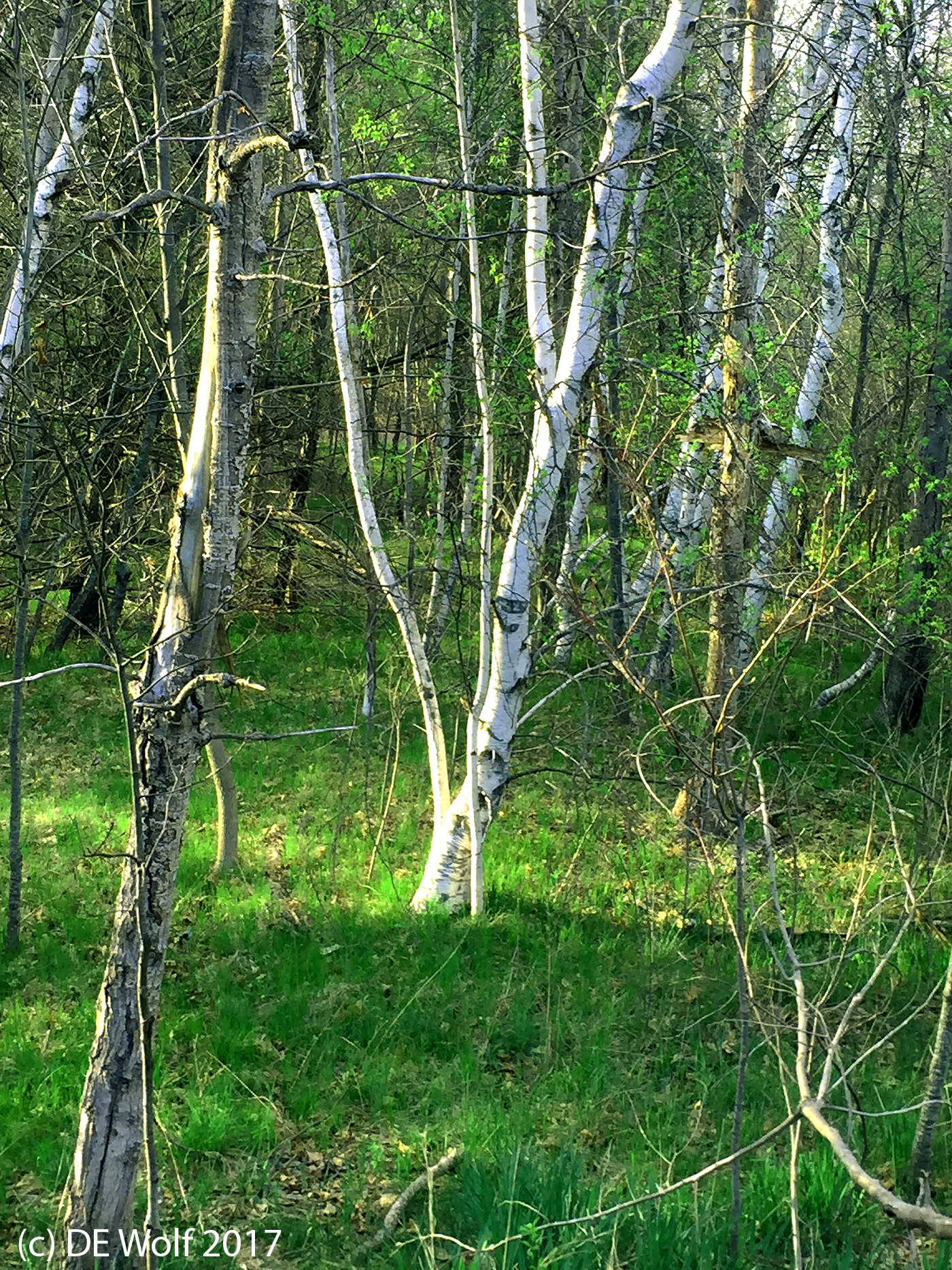The image of Figure 1 fulfills my fantasy of a birch grove. There is an opening in the woods that even sports a covering of grass. The bone white birches stand proudly, bathed in the warm yellow light of sunset. They bear scares and are broken not just by the ravages of this winter but the last several winters. You can read the seasons in them. Nearby, out of the picture, is an ancient stonewall, put there by a long forgotten farmer. By the size of the stones we may judge that this was not to grow crops but rather to herd in sheep – most probably in the early nineteenth century. Such stones sprout each spring, compelled and driven by geology and the glacial history of Massachusetts.The scene is every appealing and ever bucolic. But the reality is that I found this little coven of trees beneath a roaring highway. The sound was so loud that it was hard to think about how to compose the image. And the scene was in many places spoiled by litter blown off the road.
Such is the context of our lives and the ambiguity of the modern world, which so often forgets its trees. But these little birches were quick to bring to mind Robert Frost’s wonderful poem – a poem from my youth – and named aptly “Birches.” The birches call us back to something simpler. In Frost’s own words:
“So was I once myself a swinger of birches.
And so I dream of going back to be.
It’s when I’m weary of considerations,
And life is too much like a pathless wood…”

